Physics
-
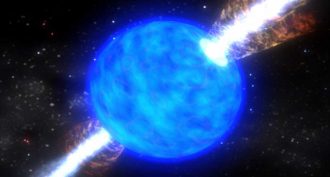 Physics
PhysicsDying stars can make gold as they collapse into black holes
There are spinning stars in space. Some of them collapse into black holes. Along the way, they may generate a lot of heavy elements — including gold.
-
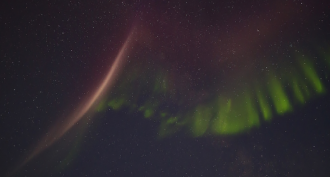 Earth
EarthNew insights on how STEVE lights up the night sky
Satellite data and photos snapped by citizen scientists reveal the origins of the strange atmospheric glow called STEVE.
-
 Animals
AnimalsLet’s turn a genie blue
Aladdin’s genie is very magical. He’s also blue. What might explain that? Nature has some tricks on offer.
-
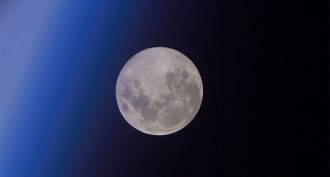 Physics
PhysicsMeteorites may be excavating lunar water
When meteorites hit the moon, water is released from the moon’s soil. That suggests the moon has water buried all across its surface.
-
 Materials Science
Materials ScienceAnalyze This: Do exotic woods make better guitars?
When comparing the sound of guitars made from rare and costly woods to those made with common, cheaper alternatives, guitarists couldn’t tell much of a difference.
By Sid Perkins -
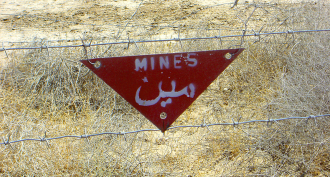 Physics
PhysicsHeat signatures help track down old and still deadly land mines
A new technique for locating land mines uses infrared cameras on drones. The novel technology uses temperature differences to find camouflaged mines before anyone might accidentally step on them.
By Sid Perkins -
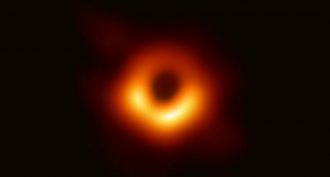 Physics
PhysicsHere’s the first picture of a black hole
The Event Horizon Telescope imaged the supermassive beast lying some 55 million light-years away in a galaxy called M87.
By Lisa Grossman and Emily Conover -
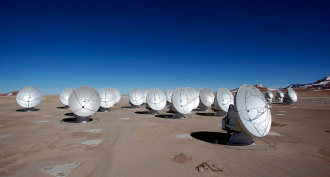 Tech
TechIt took a ‘virtual’ telescope to actually picture a black hole
Here’s how scientists connected eight observatories across the world to create one Earth-sized telescope. This is what it took to create an image of a black hole.
-
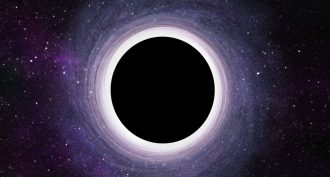 Physics
PhysicsA short history of black holes
From dreaming up black holes to snapping the first picture of one, the history of black holes has had many twists and turns.
-
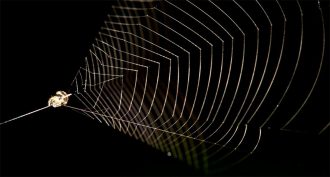 Animals
AnimalsThis spider slingshots itself at extreme speeds to catch prey
By winding up its web like a slingshot, this spider achieves an acceleration rate far faster than a cheetah’s.
-
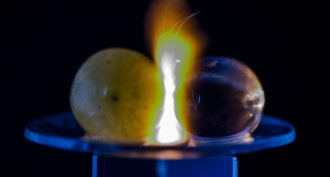 Physics
PhysicsScientists now know why microwaved grapes make plasma fireballs
Grapes trap microwave energy that bounces back and forth within the fruit. Until boom — a plasma!
-
 Chemistry
ChemistryShape-shifting chemical is key to new solar battery
Storing solar energy is a challenge. A new, shape-shifting molecule may provide a solution.